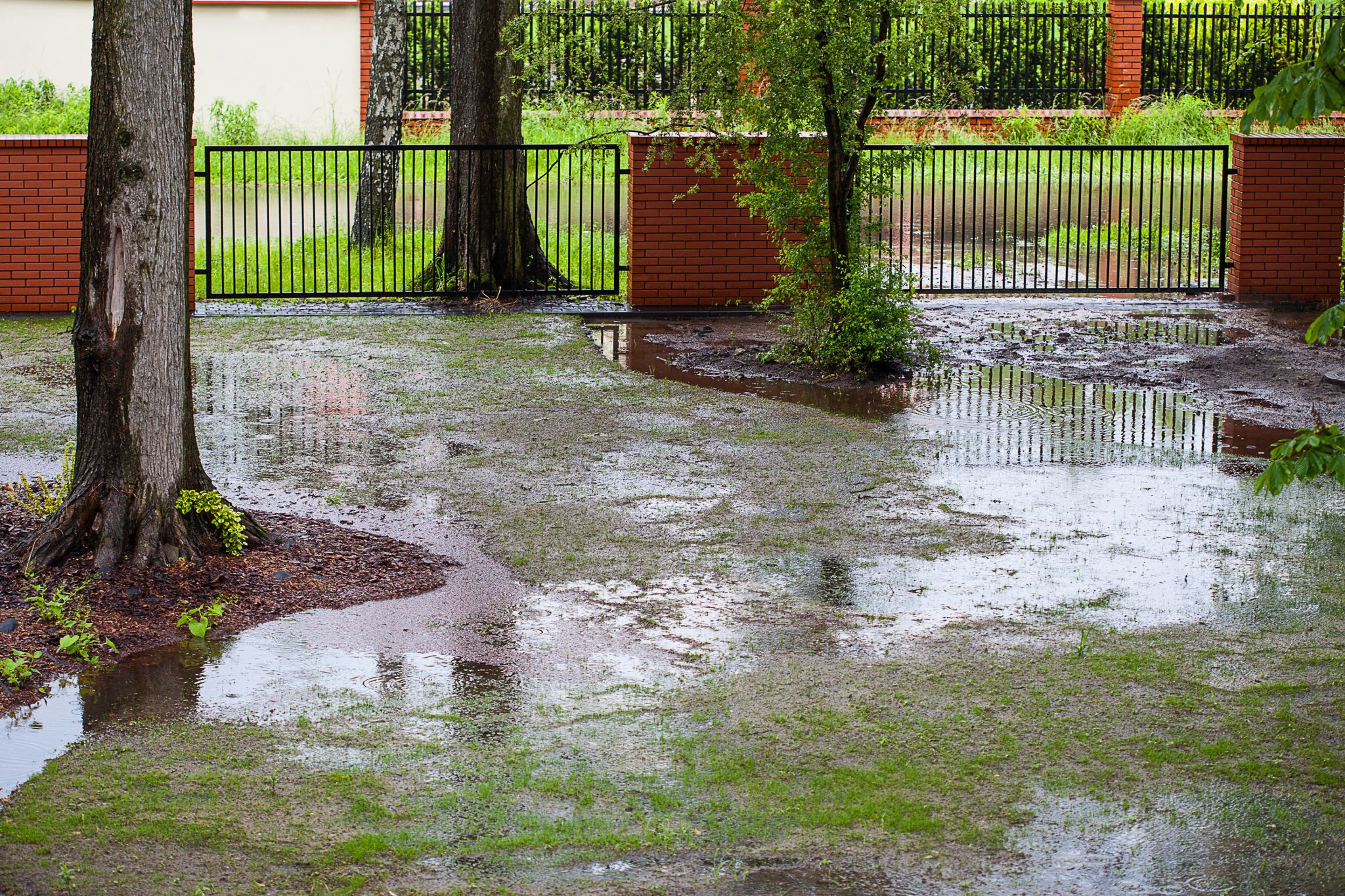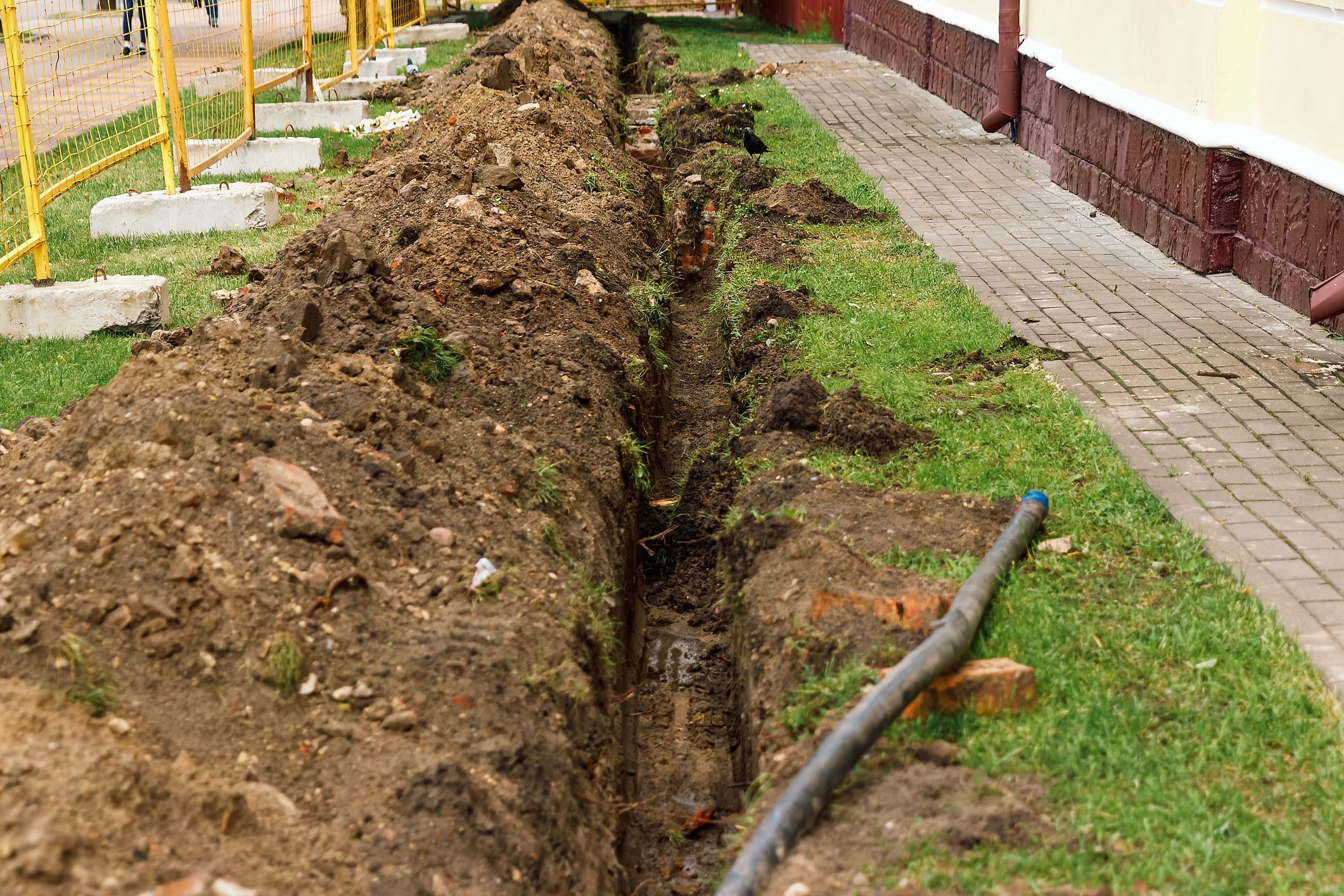Choosing the Most Suitable Contractor for Your Portland French Drain Project
Choosing the Most Suitable Contractor for Your Portland French Drain Project
Blog Article
The Important Guide to Maintaining Your French Drain for Lasting Performance
Maintaining your French drainpipe is vital to its performance and your home's security. Routine checks can save you from expensive repair work and water damage. You'll wish to know what indicators to seek and just how often to inspect your system. And also, recognizing the cleaning process can make a significant distinction. Allow's discover the important actions for ensuring your drain functions well for years ahead.
Recognizing the Feature of a French Drainpipe
A French drain is a vital element in managing water around your home. It routes excess water away from your foundation, avoiding flooding and damage. When hefty rainfall drops, the drain collects water through a perforated pipeline buried in gravel. This system permits water to stream easily, reducing stress on your basement wall surfaces and lessening the danger of leaks.You could ask yourself exactly how it operates in method. As water saturates the dirt, gravity pulls it towards the drain. The perforated pipeline catches this water, carrying it to a designated drain location or tornado drain. This process keeps your yard dry and shields your home's architectural integrity.Understanding just how a French drain functions is essential to appreciating its importance. By effectively funneling water away, it assists keep a dry and risk-free living setting. So, keeping your French drain in leading problem guarantees you prevent pricey repair work down the line.
Regular Assessments: What to Seek
Start by inspecting for any kind of obstructions that might be obstructing water flow when you're examining your French drain. Focus on indicators of surface area disintegration around the drainpipe, as this can indicate possible issues. Regular assessments will assist keep your drain system operating properly.
Obstructed Drainpipe Analysis
How can you tell if your French drain is clogged? First, look for water pooling in your lawn, particularly after hefty rain. That's a red flag if you see locations where water accumulates rather of draining. You ought to also check the drain electrical outlet; if water isn't spurting as it should, there's most likely a clog. Pay attention for uncommon gurgling noises, which can indicate trapped air. Additionally, inspect the drainpipe's surface area for any greenery development, as origins can infiltrate and clog the system. If you smell musty smells, it might point to stationary water triggered by a clog. Consistently reviewing these indications can help you keep your French drain efficiently and protect against pricey repair services.
Surface Disintegration Inspect

Cleaning Your French Drainpipe: Step-by-Step Guide
Cleansing your French drainpipe is essential for keeping it operating correctly. You'll require some particular devices and a clear process to ensure everything runs efficiently. Let's go through the actions and tips for keeping your drain successfully.
Devices You'll Require
To tackle the task of cleansing your French drain properly, you'll intend to gather a few necessary devices. Grab a sturdy pair of gloves to protect your hands from particles and sharp items. A tiny shovel or trowel will aid you get rid of dust or blockages around the drain. For getting rid of out the inside, a plumbing's snake or a high-pressure water nozzle can be unbelievably valuable. You'll likewise need a container for gathering any debris you take out. Having a yard pipe on hand will certainly make it simpler to rinse out the drainpipe and assure it's streaming smoothly. With these tools all set, you'll be established for a thorough cleansing session!
Cleansing Process Steps
Start by evaluating the location around your French drainpipe for any kind of noticeable particles or obstructions. Eliminate leaves, branches, or dust that might obstruct water flow. Next, check the inlet and electrical outlet locations; clear any type of blockages to ensure appropriate drainage. Use a yard tube to purge the drainpipe, routing water right into the inlet. This aids dislodge any built up sludge or sediment. If you see consistent blockages, consider utilizing a plumbing technician's snake to break them up. After cleaning, check the crushed rock around the drainpipe; renew it if it's removed. Lastly, confirm the drainpipe covers are undamaged and safely in place to avoid debris from going into. Regular cleaning maintains your French drainpipe working effectively.
Maintenance Regularity Tips
While normal upkeep is essential for your French drain's durability, knowing how usually to maintain it can make all the difference. Preferably, you need to examine your French drainpipe a minimum of two times a year, preferably in spring and loss. After heavy rains or snowmelt, look for blockages or debris. If you see any best site type of standing water, it's time to cleanse your drain.In areas with heavy vegetation, more frequent upkeep-- regarding every 3 months-- might be necessary. Furthermore, think about cleansing your French drainpipe after significant tornados or if you observe water merging in your yard. By staying positive, you'll assure your French drainpipe features effectively and safeguards your home from water damages. Routine checks will certainly conserve you time and cash in the future.
Determining Usual Problems and Their Solutions
It's vital to determine typical concerns with your French drain and apply reliable remedies when you observe water merging in your lawn or damp spots in your basement. One constant trouble is obstructing, frequently brought on by debris like Read Full Report leaves or sediment. To fix this, you can use a plumbing snake or a high-pressure water jet to clear blockages.Another problem could be incorrect incline. Water will not move away from your home if your drain isn't sloped correctly. You can adjust the incline by digging and repositioning the drainpipe pipe.Lastly, check for damages or fractures in the drain itself. If you find any kind of, replacing the harmed areas is essential for peak efficiency. By addressing these concerns immediately, you'll help assure that your French drain proceeds to work efficiently, shielding your home from water damages and preserving a dry, secure atmosphere.
Seasonal Maintenance Tips for Your French Drain
Addressing typical issues with your French drainpipe is just the very first step in assuring its long-term effectiveness. Seasonal upkeep is important for peak performance. In the springtime, remove leaves and debris that might have accumulated during winter months. Examine for any blockages in the electrical outlet or capture container, as water needs a clear course to stream freely.During summertime, evaluate your visit this page drainpipe for any indications of settling or moving soil. Ensure it's still degree and operating correctly. As autumn strategies, clear out any type of dropped entrusts to prevent clogs before winter months arrives.In winter, watch for freezing temperatures. If you stay in a cold climate, make certain your drainpipe isn't in jeopardy of cold. Shielding revealed pipes can help. Normal checks and prompt maintenance can protect against pricey repair work and maintain your French drainpipe functioning properly year-round. Keep aggressive and appreciate tranquility of mind recognizing your water drainage system remains in great form!
When to Call in a Professional
When to call in a professional can save you time and protect against more damages to your French drain, knowing. It's a clear indicator that your drain may be clogged or harmed if you see consistent standing water in your lawn. Don't overlook weird odors, as they can indicate sewer back-up or decay, which requires prompt attention.If you locate that your drainpipe isn't working correctly after attempts to tidy or keep it, it's time to connect for expert help. In addition, if you're unclear regarding the underlying problems or lack the required devices, working with a specialist can give peace of mind.Finally, if your French drain is old or has experienced substantial deterioration, professional assessment can determine whether fixings or total replacement is required. Depend on the experts to ensure your drainage system works efficiently for many years to come.
Tips for Protecting Against Future Drain Troubles
To keep your French drainpipe operating effectively, frequently evaluating and maintaining it can make all the distinction. Beginning by clearing particles, leaves, and dust from the surface and drainpipe openings. This protects against blockages that can cause water back-up. Check the gravel around the drainpipe; if it's compressed or eroded, think about including fresh crushed rock to maintain suitable flow.Next, draw away water away from your drain by making sure downspouts and gutters are clear and routing water at the very least three feet far from your structure. Regularly examine for any type of indicators of damages or drooping. If you discover problems, resolve them immediately.Finally, consider mounting a filter or a catch container to catch larger particles prior to it goes into the drainpipe. By staying proactive with these ideas, you'll minimize the risk of future water drainage issues and maintain your French drain in top form.
Often Asked Inquiries
How Long Does a French Drainpipe Typically Last?
A French drainpipe generally lasts around 30 to 40 years, relying on the materials made use of and maintenance (Portland French Drain). If you stay on par with normal checks, you can extend its lifespan even better
Can I Mount a French Drainpipe Myself?
Yes, you can install a French drainpipe yourself if you've got the right tools and expertise. Simply make specific to intend thoroughly, follow regional guidelines, and warranty correct drainage to prevent future problems.
What Products Are Utilized in a French Drainpipe?
You'll require perforated pipe, crushed rock, landscape material, and a solid drain pipe for your French drain. These materials help redirect water efficiently, preventing flooding and maintaining your property dry and safe from water damage.

Is an Authorization Required to Mount a French Drainpipe?
You'll likely require an authorization to mount a French drainpipe, relying on neighborhood guidelines. Contact your community to ensure you follow any type of needed guidelines and prevent prospective issues during installation.
What Are the Prices Related To French Drainpipe Maintenance?
Maintaining a French drain generally costs in between $100 and $500 each year. You'll require to take into account expenses for cleaning, fixings, and examinations. Normal upkeep helps avoid bigger expenditures and guarantees your system operates appropriately for many years - Portland French Drain. When you're examining your French drain, beginning by inspecting for any obstructions that may be obstructing water circulation. By staying aggressive, you'll ensure your French drain features efficiently and protects your residential or commercial property from water damages. When you observe water pooling in your backyard or damp spots in your cellar, it's crucial to identify usual problems with your French drain and carry out efficient solutions. You can change the slope by excavating and repositioning the drainpipe pipe.Lastly, check for damage or splits in the drain itself. Examine the gravel around the drainpipe; if it's compacted or deteriorated, take into consideration adding fresh crushed rock to preserve optimal flow.Next, divert water away from your drainpipe by ensuring rain gutters and downspouts are clear and routing water at least 3 feet away from your structure
Report this page